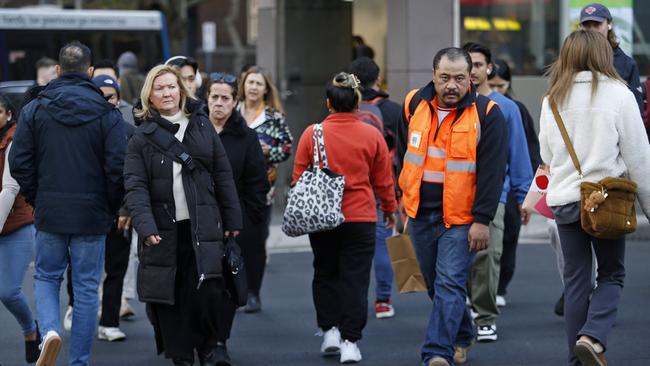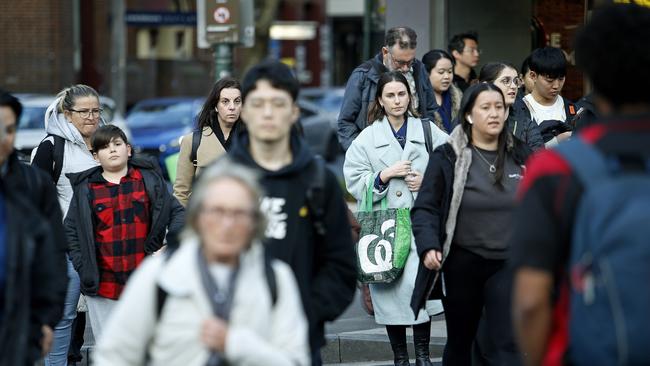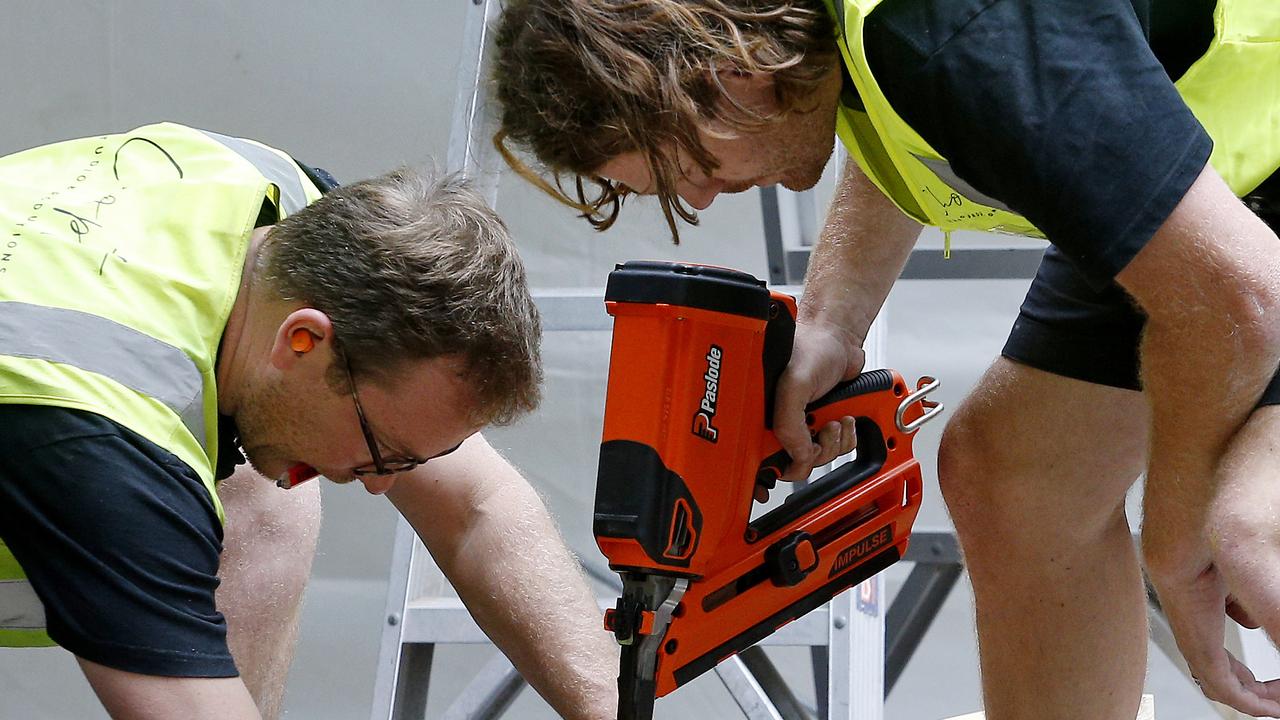ABS releases latest labour force figures, unemployment rises to 4.1 per cent
Analysts have largely agreed on how Thursday’s job data release will affect the Reserve Bank’s cash rate decision in two weeks time.

Business
Don't miss out on the headlines from Business. Followed categories will be added to My News.
Economists and analysts are expecting the Reserve Bank to hold the cash rate at 4.35 per cent, following a slight increase in the unemployment rate to 4.1 per cent.
The increase, revealed in the seasonally adjusted figures released by the Australian Bureau of Statistics (ABS) on Thursday, was partially offset by 50,000 new jobs added to the economy, with labour force participation also higher than predicted.
Oxford Economics Australia’s lead economist Ben Udy said Thursday’s data wouldn’t have too much of an impact on the rates, and maintained the RBA would hold the cash rate when it hands down its decision on August 6.
“By far the more important thing will be the inflation data which will come up on the 31st of July,” Mr Udy said, referring to the release of the Cash Price Index for the June quarter.
“We’re also not expecting a big rise in inflation which is driving the market speculation of a rate increase.”
Mr Udy said while there had been a “very gradual loosening in the labour market,” it continues to remain really tight.
“The monthly labour market has been volatile over the last year, and in part that’s been driven by the timing of holidays and people being reluctant to start new jobs after Christmas and Easter,” he said.
“Even though the unemployment market ticked up, the labour market remains really tight – a rise in employment of 50,000 is a really strong result and the fact that the strength was focused in full-time employment meant the underemployment rate actually ticks down a little bit.”
BDO Economics Partner Anders Magnusson dismissed concerns Australia’s continued tight labour market would cause inflation to accelerate.
He said while Thursday’s 4.1 per cent rate was below 4.3 per cent, which the RBA estimates is the non-accelerating inflation rate of unemployment, Mr Magnusson pointed to other labour market factors such as decreasing job mobility, decreasing job vacancies and decreasing job advertisements, as signs the market is in fact, weakening.

He also tipped the RBA to hold the cash rate in August.
“The May monthly inflation data provided a misleading impression that inflation was accelerating,” he said.
“In fact, the monthly data showed that prices were lower in May than in April but the annual measure showed an increase in inflation due to a quirk in the annual ‘point to point’ method the ABS chooses to measure it.
“The RBA’s decision next month should primarily consider the upcoming quarterly CPI release and not the monthly inflation data.
“I expect the quarterly inflation data to show no major increase in inflation and the RBA to continue to hold the cash rate as a result.”
Betashares chief economist David Bassanese wasn’t as sure and said the decision would “go down to the wire,” with the potential for the CPI to hit 4 per cent and thus, triggering a rate rise.
“My base case is that the CPI will come within a whisker of being bad enough to place extreme pressure on the RBA to raise interest rates next month,” he said.
“My expectation is that annual growth in both headline and trimmed mean inflation will be 3.9 per cent in the June quarter, or just above the RBA’s latest forecast of 3.8 per cent, but if either or both annual inflation rates crack 4 per cent or more, the RBA will be under pressure to act.”

Analysing Thursday’s labour force data, the ABS’ head of labour statistics Bjorn Jarvis said the employment-to-population ratio and participation rate both continued to be near their 2023 highs, with immigration fuelling growth in the labour force.
“With employment rising by around 50,000 people and the number of unemployed growing by 10,000 people, the unemployment rate rose slightly to 4.1 per cent and the participation rate rose to 66.9 per cent,” he said.
“The participation rate in June was only 0.1 percentage point lower than the historical high of 67.0 per cent in November 2023.
“The employment-to-population ratio rose by 0.1 percentage point to 64.2 per cent, which was also close to its historical high of 64.4 per cent in November 2023.”
Mr Jarvis said the growth in unemployment in June followed a fall of 9000 people in May.
“While it has increased from a low of 491,000 people in October 2022 to 608,000 in June, it is still around 100,000 people or 14.2 per cent lower than just prior to the Covid-19 pandemic,” he said.
“The unemployment rate was 0.5 percentage points higher than June last year, and 1.1 percentage points lower than March 2020,” Mr Jarvis said.
Originally published as ABS releases latest labour force figures, unemployment rises to 4.1 per cent




